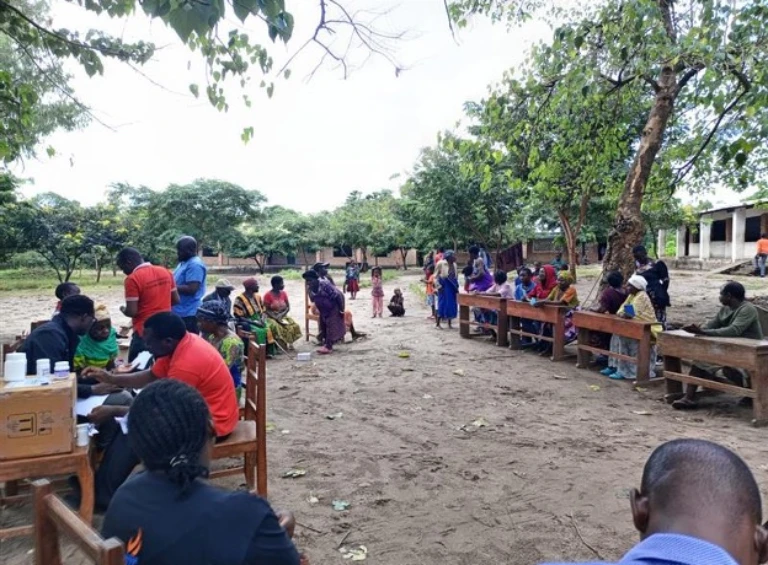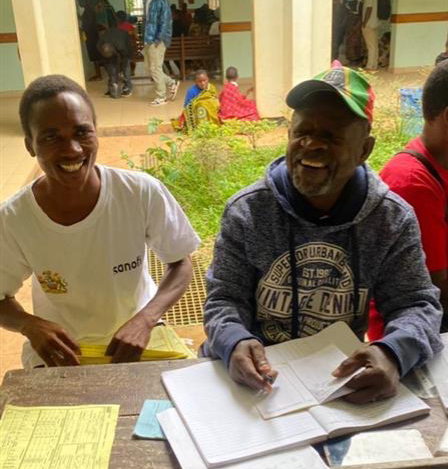- Article
- Source: Campus Sanofi
The Phindu Project enhances NCD care in Nkhata Bay and Mzimba
Read more about how CHAM, with support from Sanofi Global Health Unit, is implementing the Phindu project in Nkhata Bay and Mzimba, building 12 health facilities to implement the NCD program.

CHAM, with support from Sanofi Global Health Unit, is implementing the Phindu project in Nkhata Bay, Mzimba North and South Districts, building the capacity of 12 health facilities in implementing the NCD program. A district visit was made with CHAM ED Happy Makala, CHAM Health Programs Manager Dr Dumisani Nkhoma, and CHAM Pharmacy Manager evans Chirambo. During this day, a clinic at Nkhata Bay district hospital and an outreach at Chintheche Rural Hospital were planned. The delegation went to appreciate project activities in Nkhata Bay.
Chintheche Rural Hospital Outreach session
It had been raining by the time outreaches were supposed to be done. The Chintheche and Nkhata Bay teams prepared still for an outreach session as it was already planned and announced within nearby communities. The program coordinator for Nkhata Bay district gave some feedback on the role the project has played in the district’s NCD program.
- There is some evidence of increased awareness as clients report receiving sensitization messages from community gatekeepers
- There is some increase seen in rate of enrolment into care in 2023 as compared to previous years
- With health workers being trained, there is been an observation in improved quality of case management for enrolled patients
- So far 3 sites have been decentralized, meaning they can run NCD clinics. These are Chintheche, Chilambwe an Mzenga health centres. This has helped patients by reducing distances to care, as before, only the district hospital had a functional NCD clinic.

Planned outreach was delayed due to rain. That said, people started to come after the rains. The patronage to outreach clinics also reflects patterns of behavioural change with communities more likely to go for screening services as compared to only seeking care when ill.
Nkhata Bay District Hospital NCD clinic
NCD clinics are run every Thursday at the district hospital. People arrive as early as 3.00 am to attend the clinic. Clinic flow involves screening, consultations and documentation, investigations (e.g. eye, labs etc), and then pharmacy (collecting drugs). Key constraints remain the erratic availability of main drugs. When the clinic was being conducted, the district had no calcium channel blockers in stock. Insulin is regularly unavailable. There were two consequences of this situation, firstly, default rates are usually positively associated with a lack of drugs, and secondly, the proportion of clients enrolled into care with disease control reduces with frequent stockouts. Other challenges of note included a lack of weighing scales, registers, and mastercards.
One of the inspiring stories was meeting a man, a client to the NCD clinic, who comes every Thursday, not only as a patient, but also a volunteer to assist in running of the clinic, by conducting screening, documenting in patient records and doing health talks. Such kind of dedication helps the health workers, who usually now concentrate on consultations. In addition, this also helps to reduce the waiting time for patients.
Action points:
- CHAM to procure some materials once virement is effected.
- CHAM to conduct second smaller round of trainings.

MAT-GLB-2304595 (v5.0) March 2025
